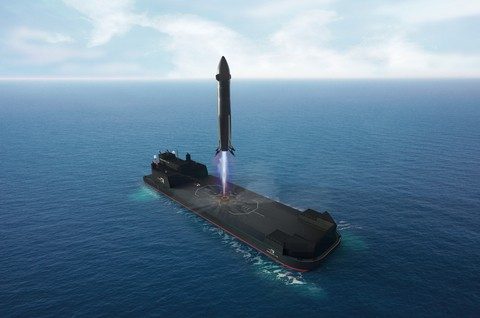Louisiana’s Shipbuilding Industry Embraces High-Tech Future

In a significant development for the maritime sector, Louisiana is witnessing a resurgence in shipbuilding, driven by innovative partnerships and government initiatives. Michael Hecht, president and CEO of Greater New Orleans, Inc., highlights the collaboration between Metal Shark in Jeanerette and HavocAI in Rhode Island to create autonomous vessels for the U.S. Navy. This revival is further underscored by Bollinger Shipyards’ recent $6 billion contract to construct Arctic icebreakers, signaling a robust future for the state’s shipbuilding capabilities.
Revitalizing Shipbuilding with Advanced Technology
The shipbuilding landscape in Louisiana is evolving, merging historical expertise with modern technological demands. Hecht emphasizes the importance of this transformation, stating, “What you’re seeing right now in Louisiana is a coming together of our historical expertise in shipbuilding combined with new needs in defense, aerospace, and energy.” The recent announcement on October 10 regarding Bollinger Shipyards securing a $6 billion contract to build four new Arctic icebreakers for the U.S. Coast Guard exemplifies this shift. This project, part of a broader U.S.-Finland partnership, is expected to generate up to 600 local jobs and enhance NATO’s defense capabilities in the Arctic region.
In addition to icebreaker construction, Louisiana is also investing in infrastructure to support larger vessels. A new $1.8 billion container terminal is under construction in St. Bernard Parish, designed to accommodate neo-post-Panamax ships that cannot navigate under the bridge leading to the Port of New Orleans. This terminal will play a crucial role in modernizing the state’s maritime operations and expanding its capacity to handle larger cargo vessels.
The U.S. government is also taking steps to revive its shipbuilding industry, with a Maritime Action Plan (MAP) expected to be released soon. This initiative aims to restore America’s shipbuilding and crewing capabilities, which have significantly declined over the decades. The U.S. now produces only 0.2% of the world’s oceangoing commercial ships, a stark contrast to the 5% it manufactured in the 1970s. The White House has called for a comprehensive strategy that includes consistent federal funding and measures to make U.S.-flagged vessels competitive in international markets.
Innovative Projects and Future Prospects
Industry experts, including Hecht, believe that the future of shipbuilding in Louisiana lies in the production of smaller, technologically advanced vessels rather than large containerships. Hecht notes, “We still have to recognize that the advantage of Louisiana and America is going to be in building these smaller, tech-forward vessels.” This approach is crucial as the cost of constructing large ships makes it challenging for U.S. manufacturers to compete with countries like China and South Korea.
Recent investments further illustrate this trend. In April, Saronic, a Texas-based company, acquired a historic shipyard in Franklin, Louisiana, planning to invest $250 million to manufacture autonomous vessels. This facility, which has a legacy dating back to 1965, will focus on producing large “water drones” for military and commercial applications. Saronic’s long-term vision includes the development of Port Alpha, a next-generation shipyard set to begin construction in 2026, aimed at mass-producing autonomous ships.
Louisiana Mesothelioma Victims Center Urges the Loved Ones of a Shipyard Worker
Moreover, Bollinger Shipyards is diversifying its portfolio by venturing into the commercial spaceflight industry. The company recently announced plans to convert a barge into a landing platform for Rocket Lab, showcasing how Louisiana’s shipyards are adapting to new markets. Hecht reflects on the state’s innovative spirit, stating, “Louisiana’s shipbuilding industry has always been defined by innovation… This innovation continues today, yet perhaps at a bigger and faster rate than ever.”
